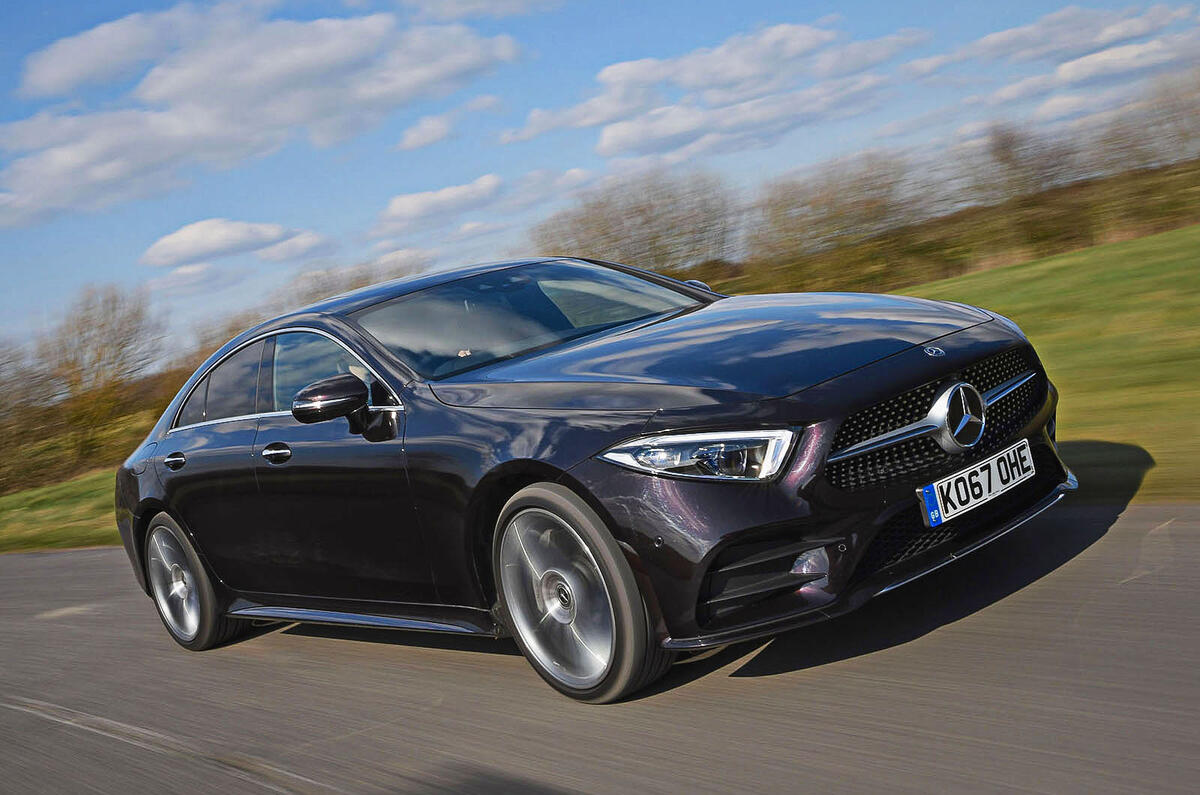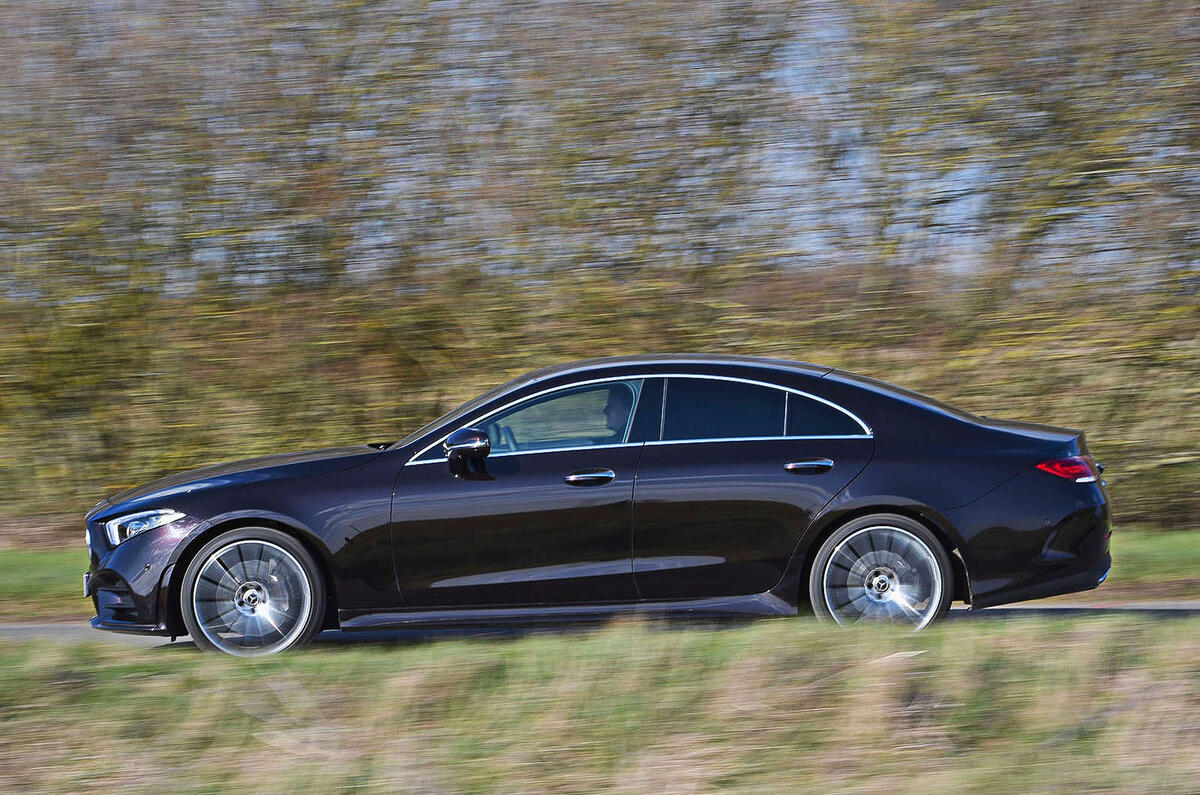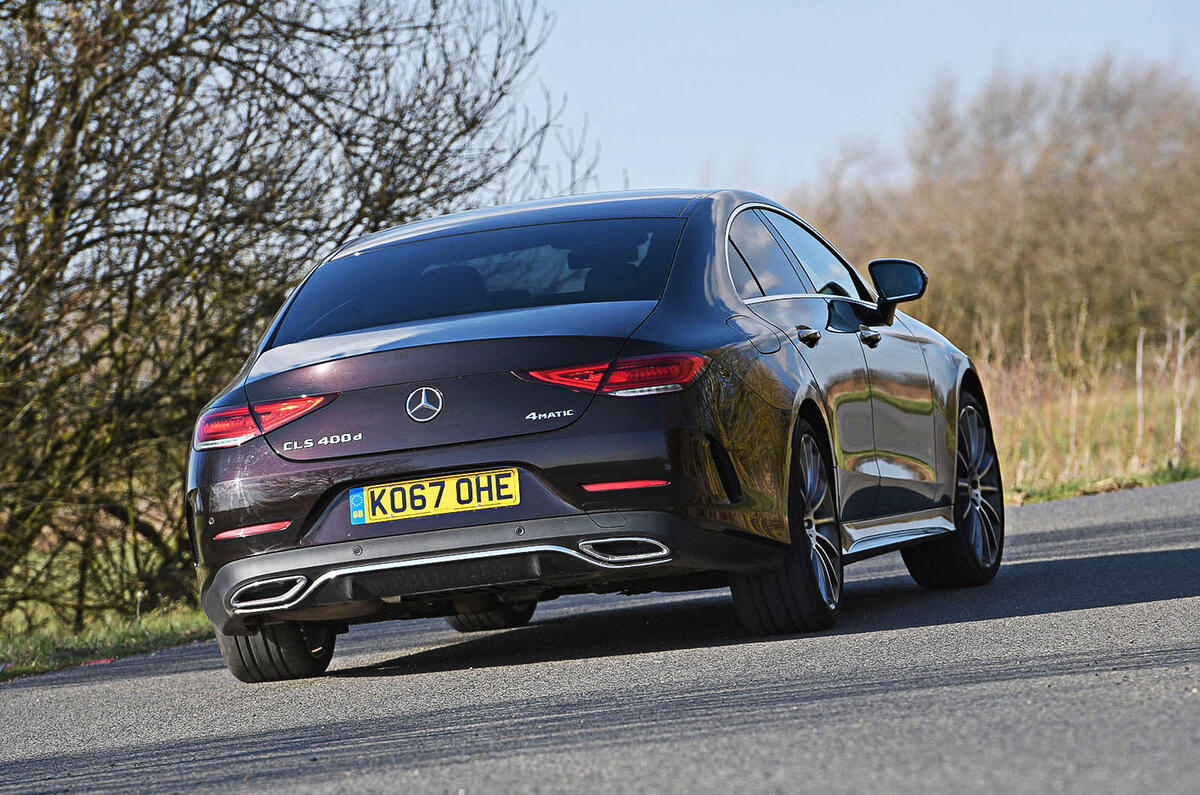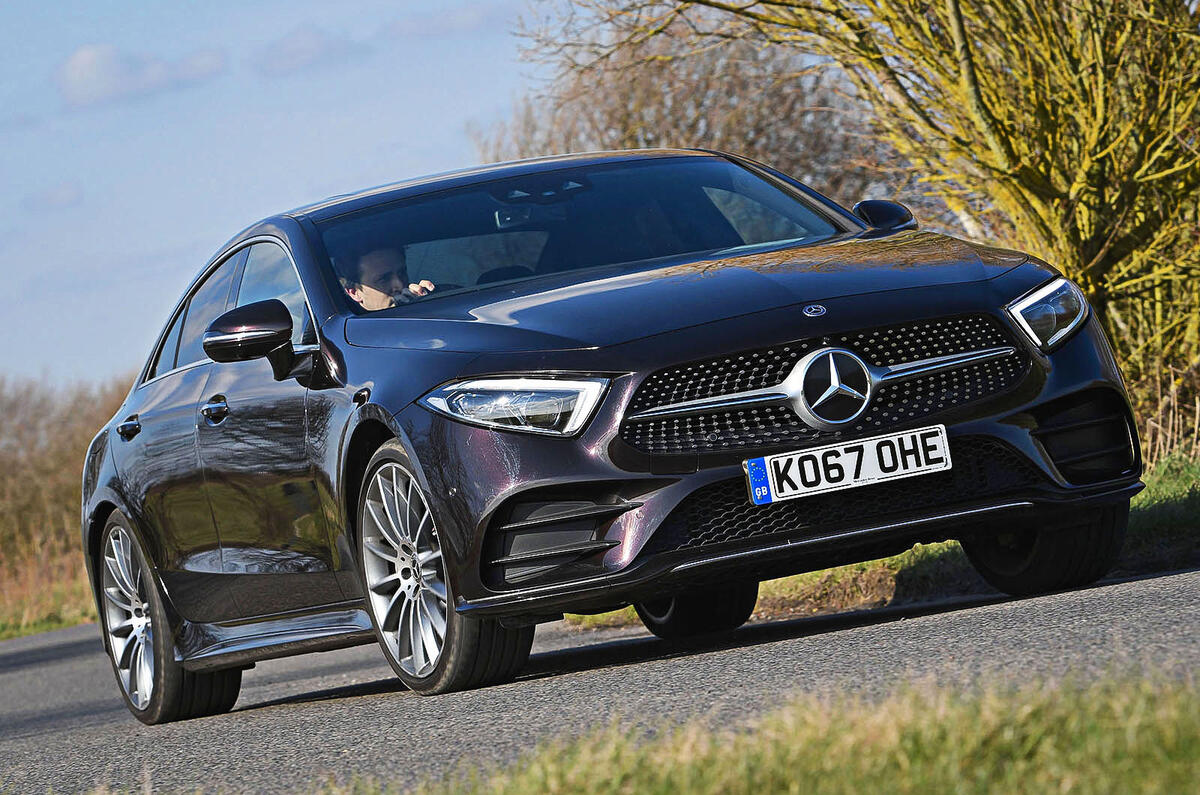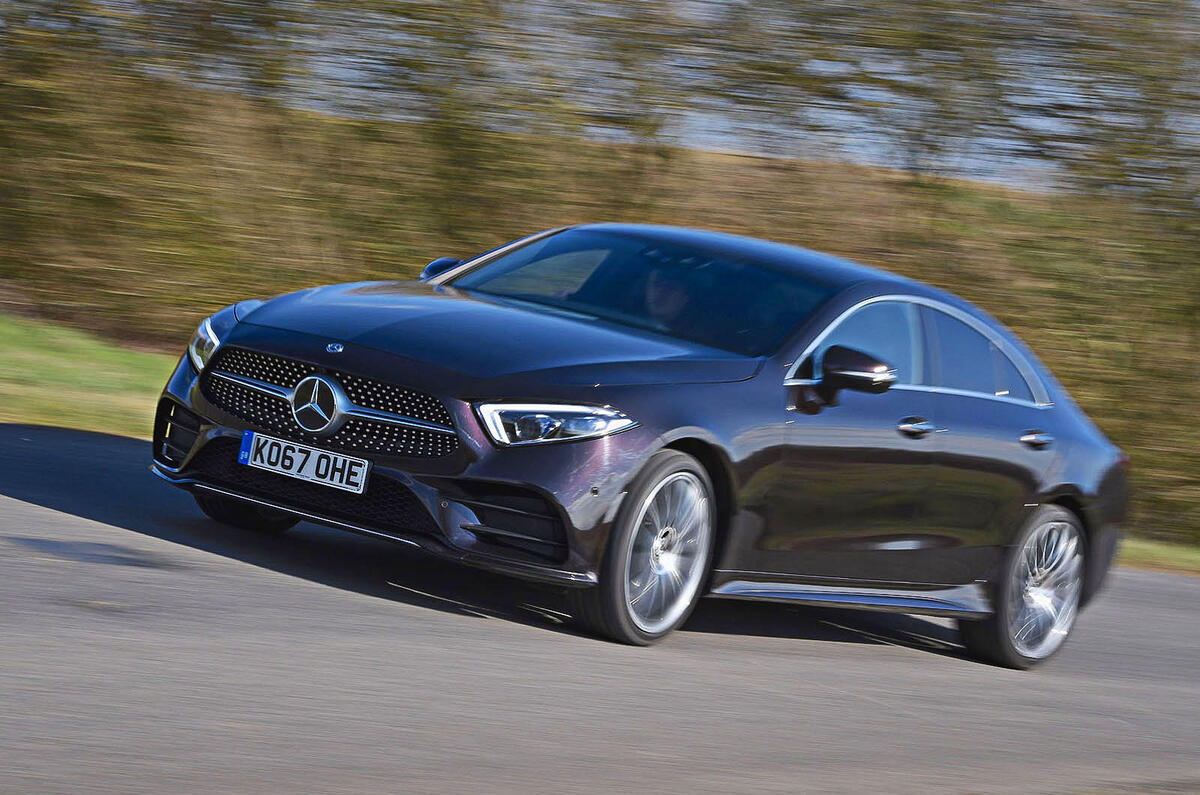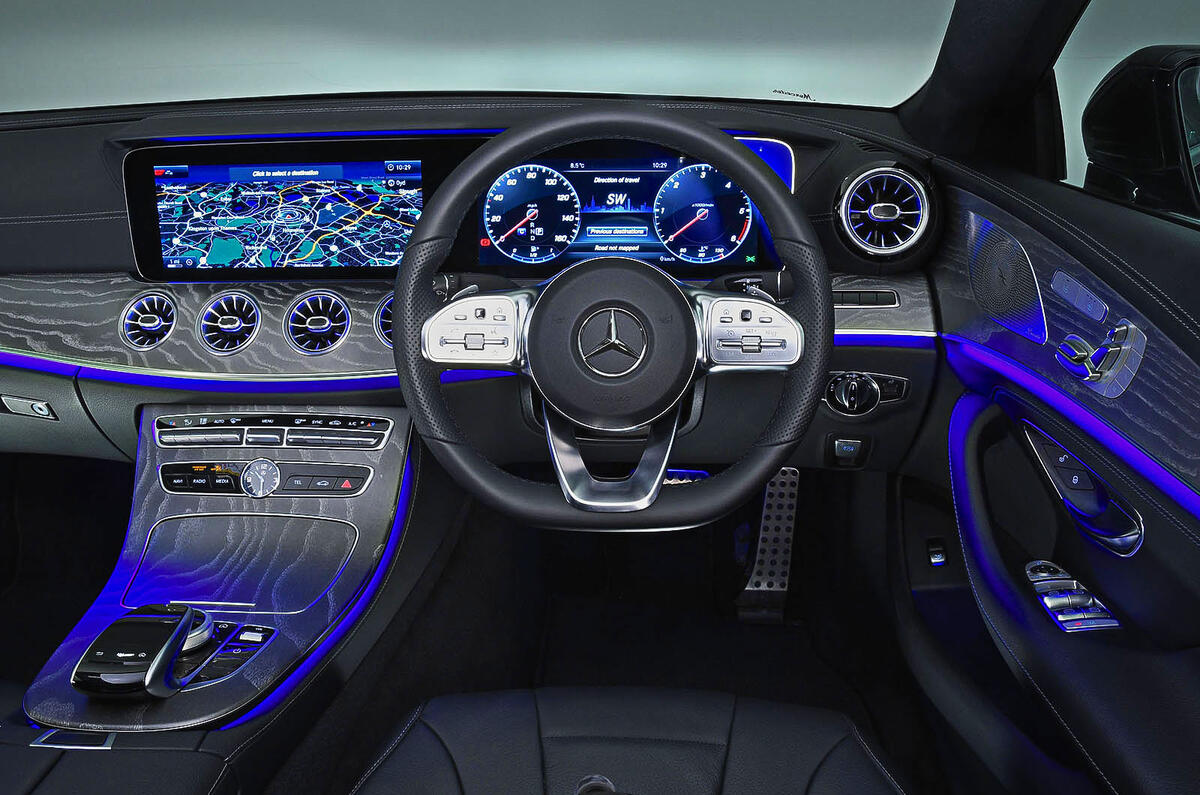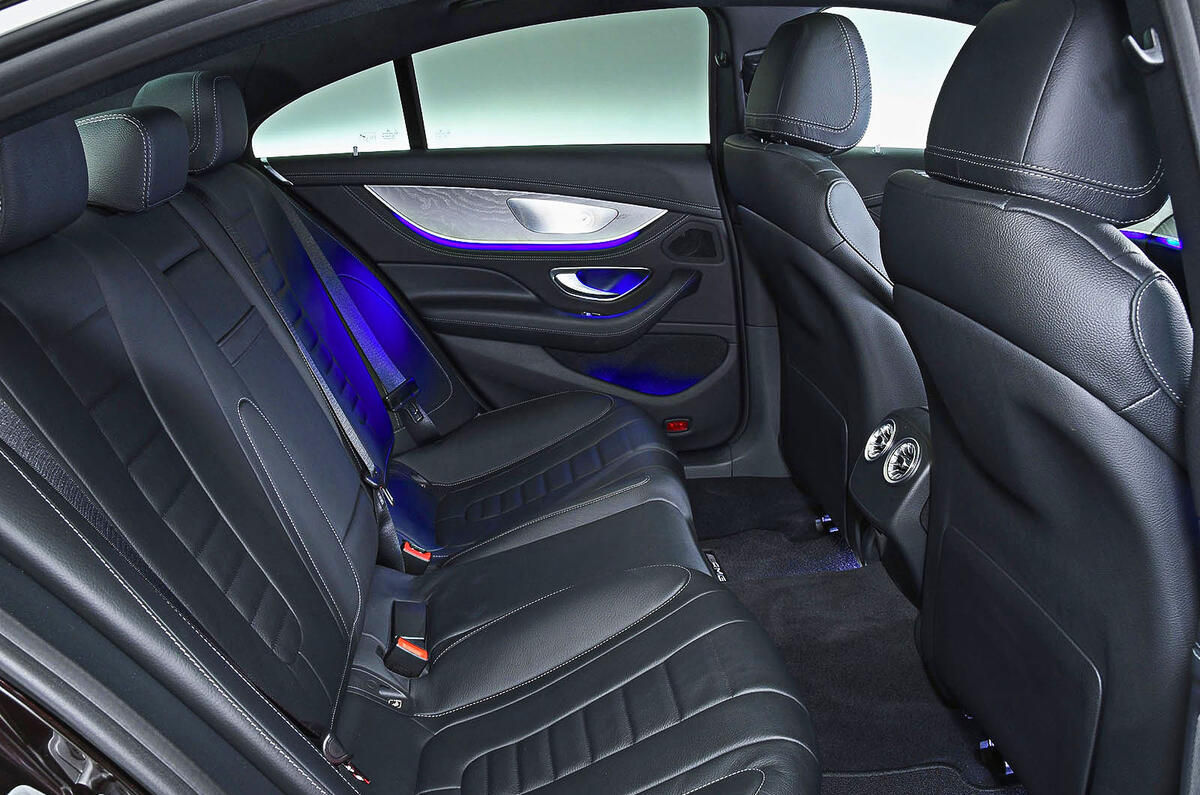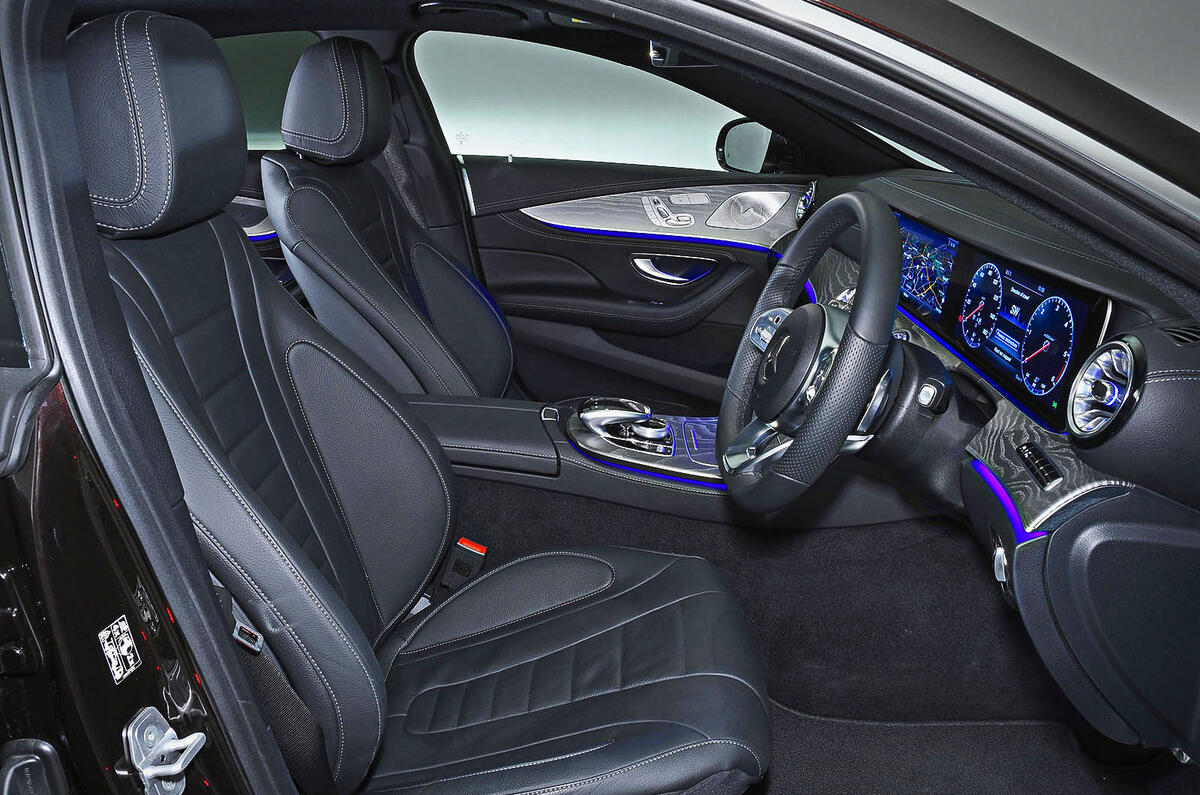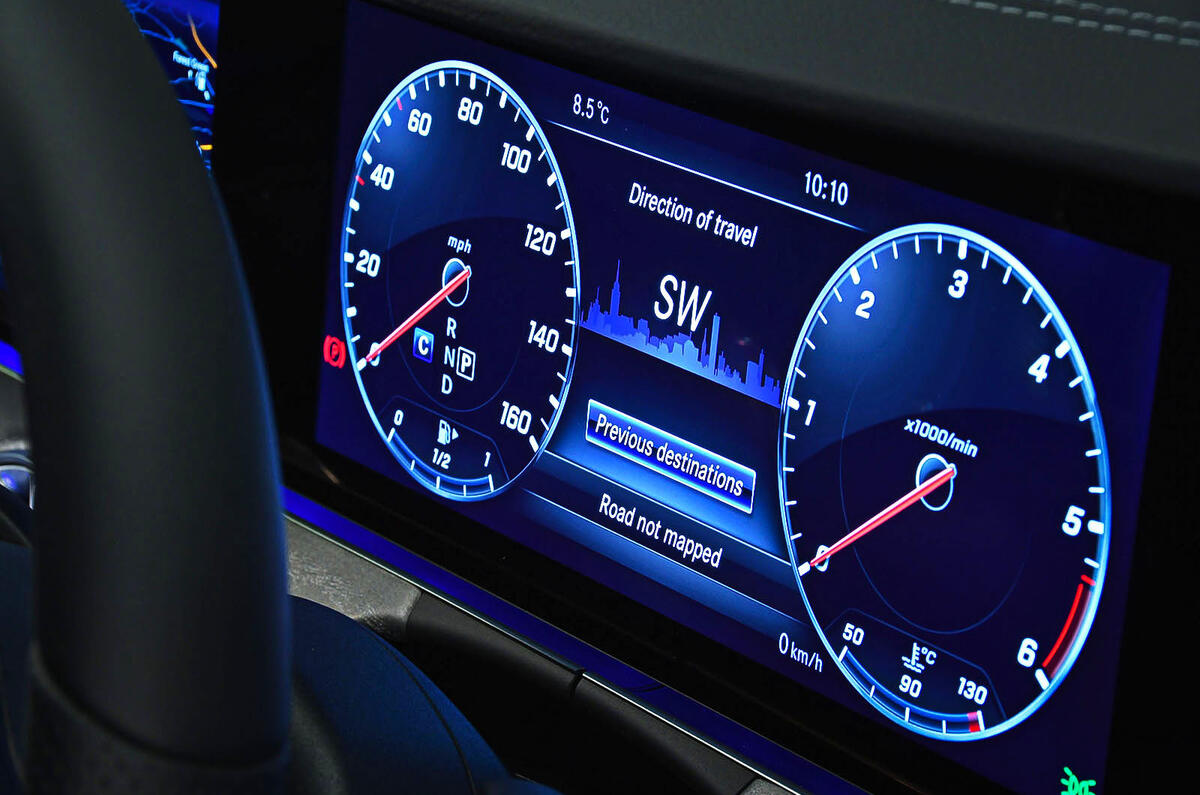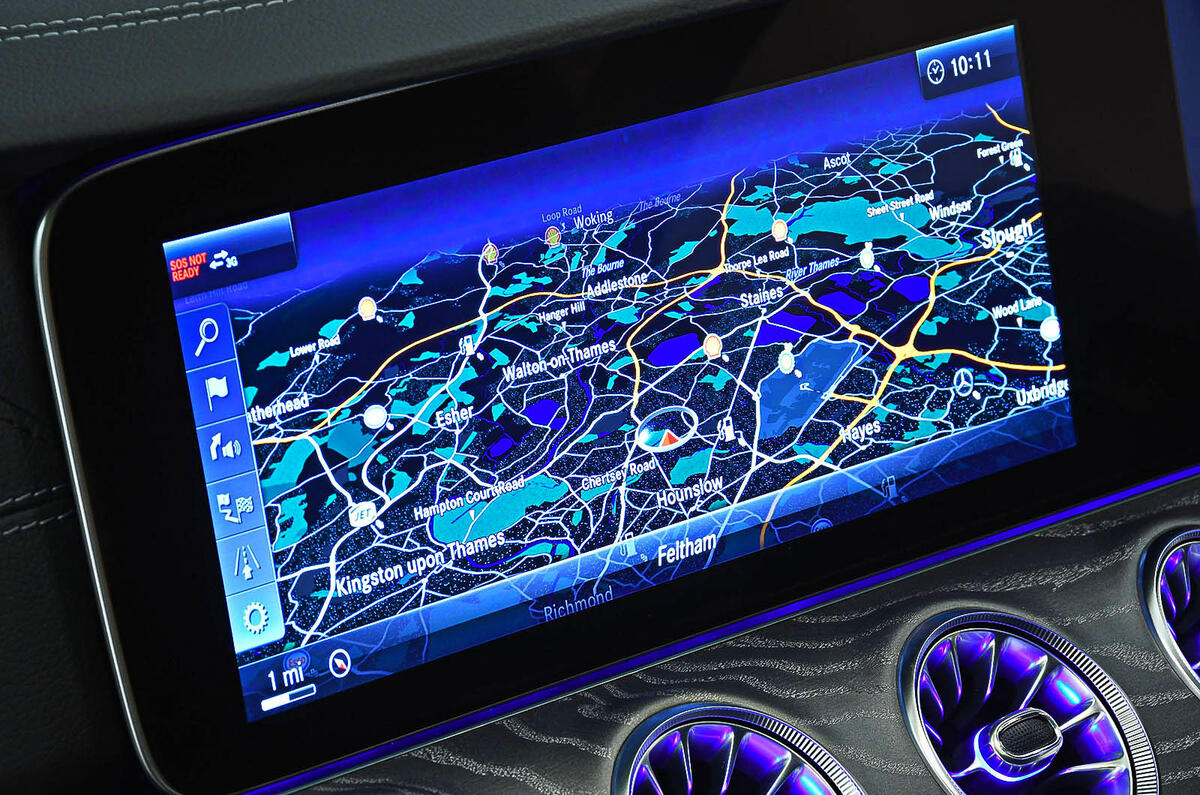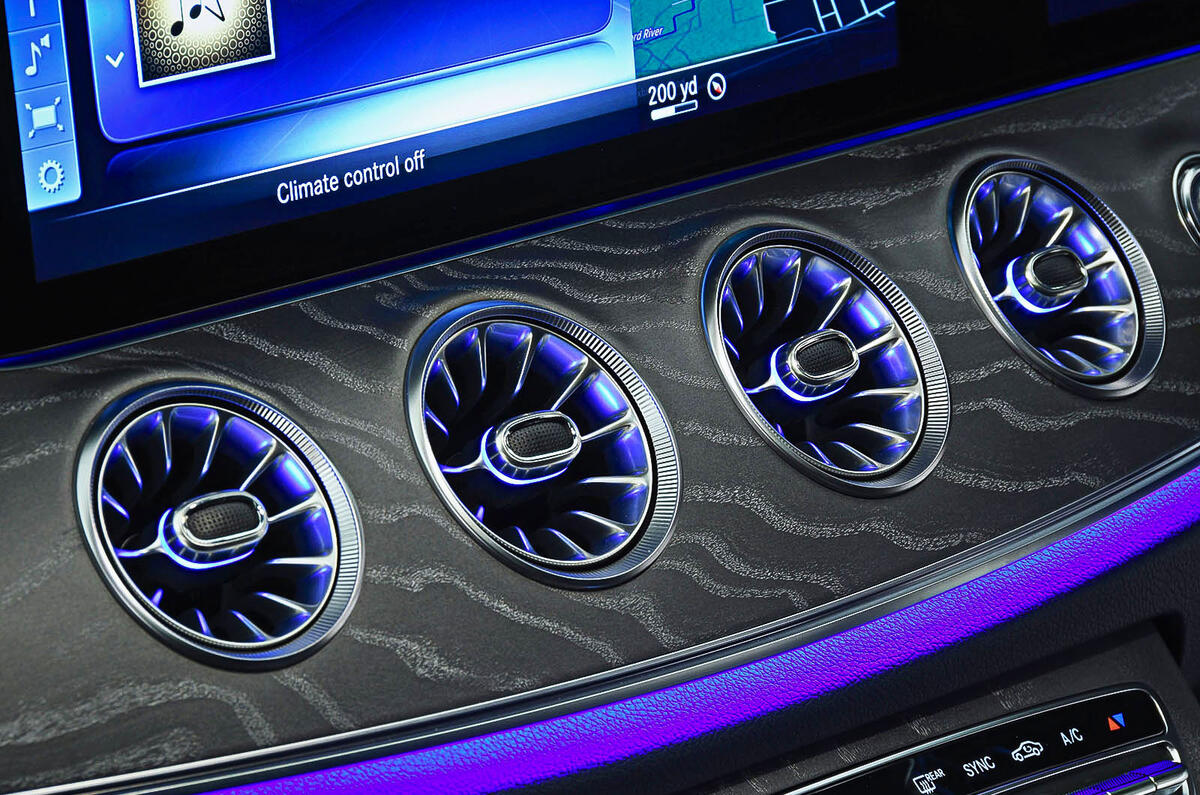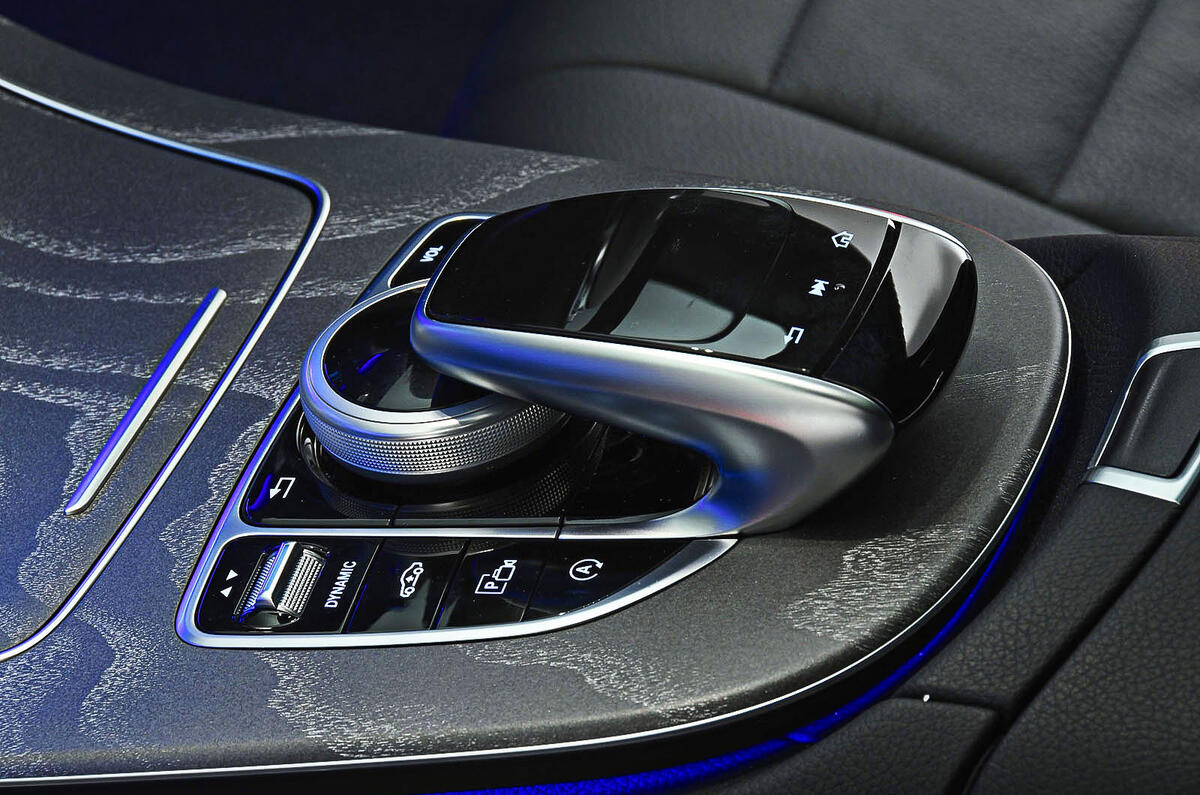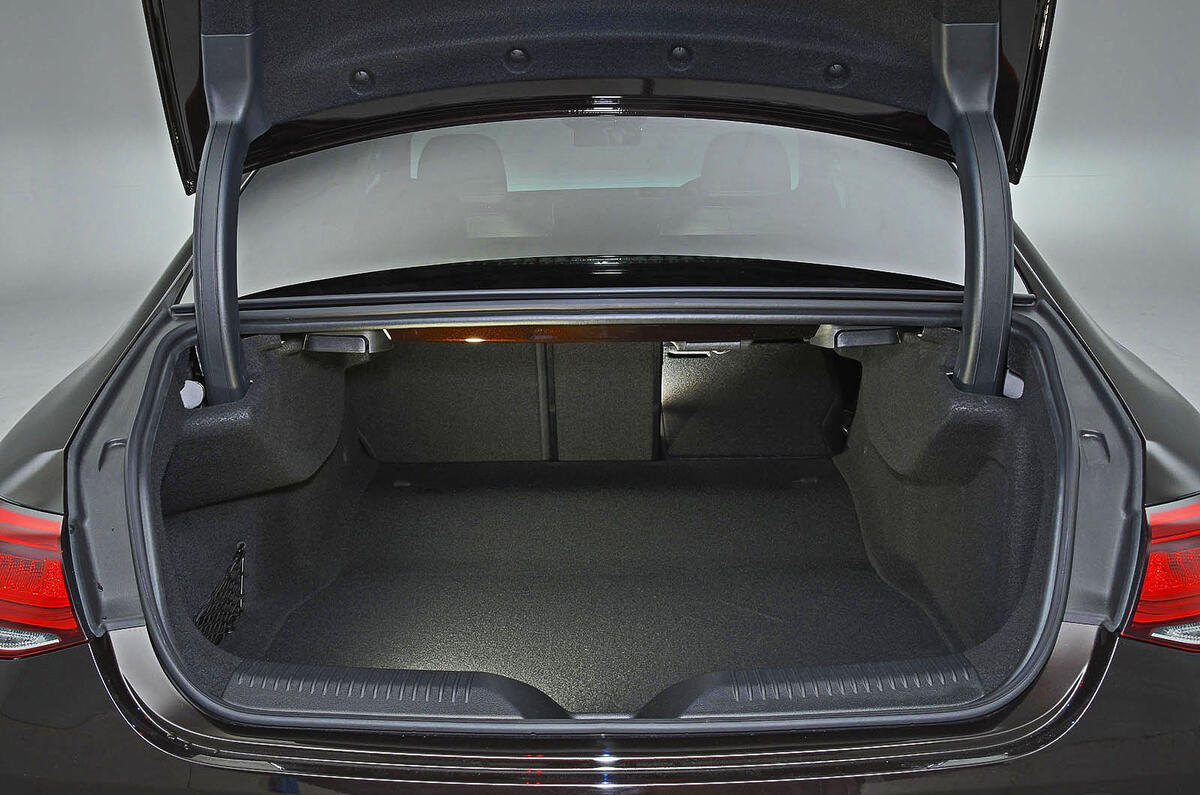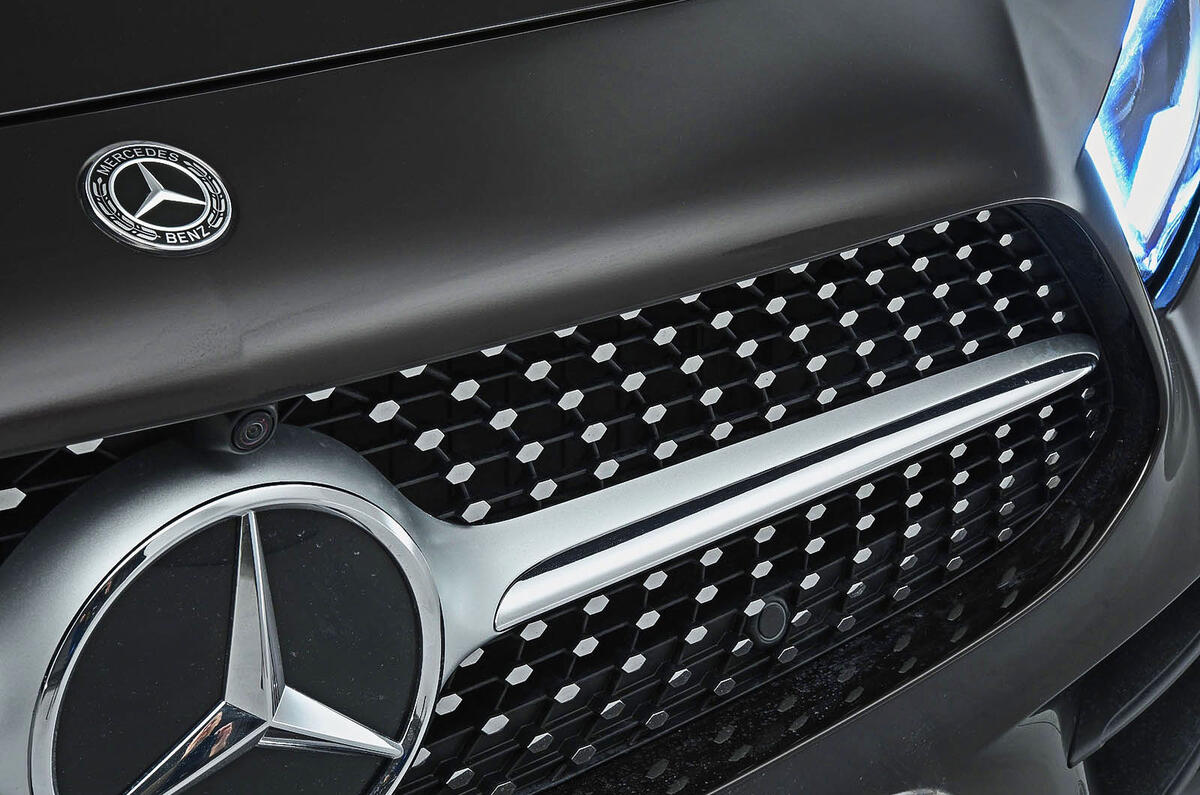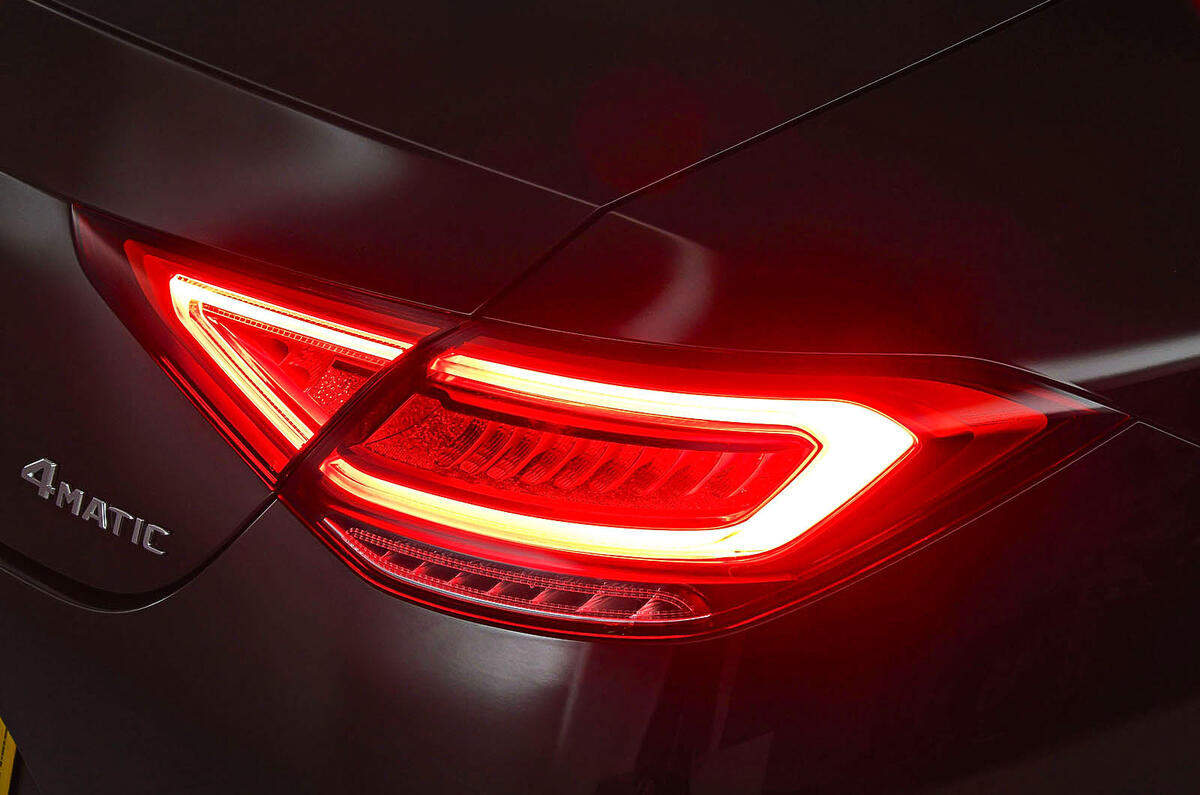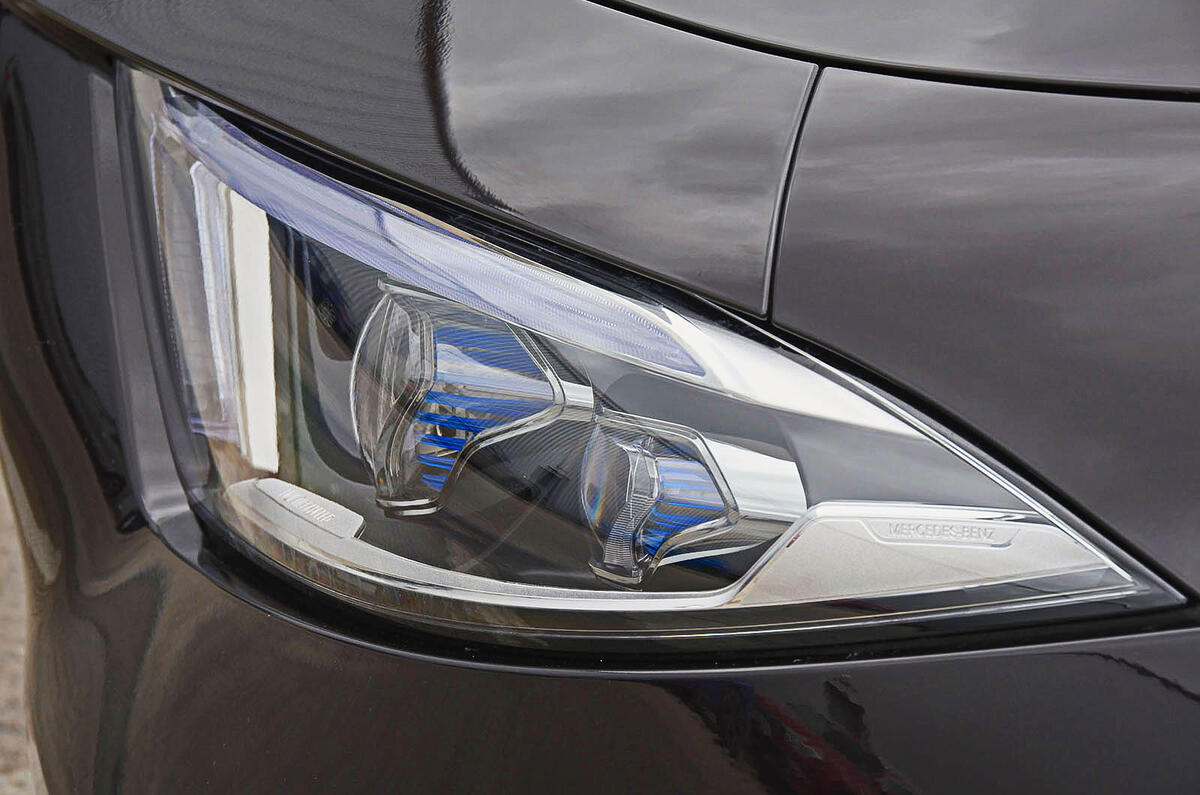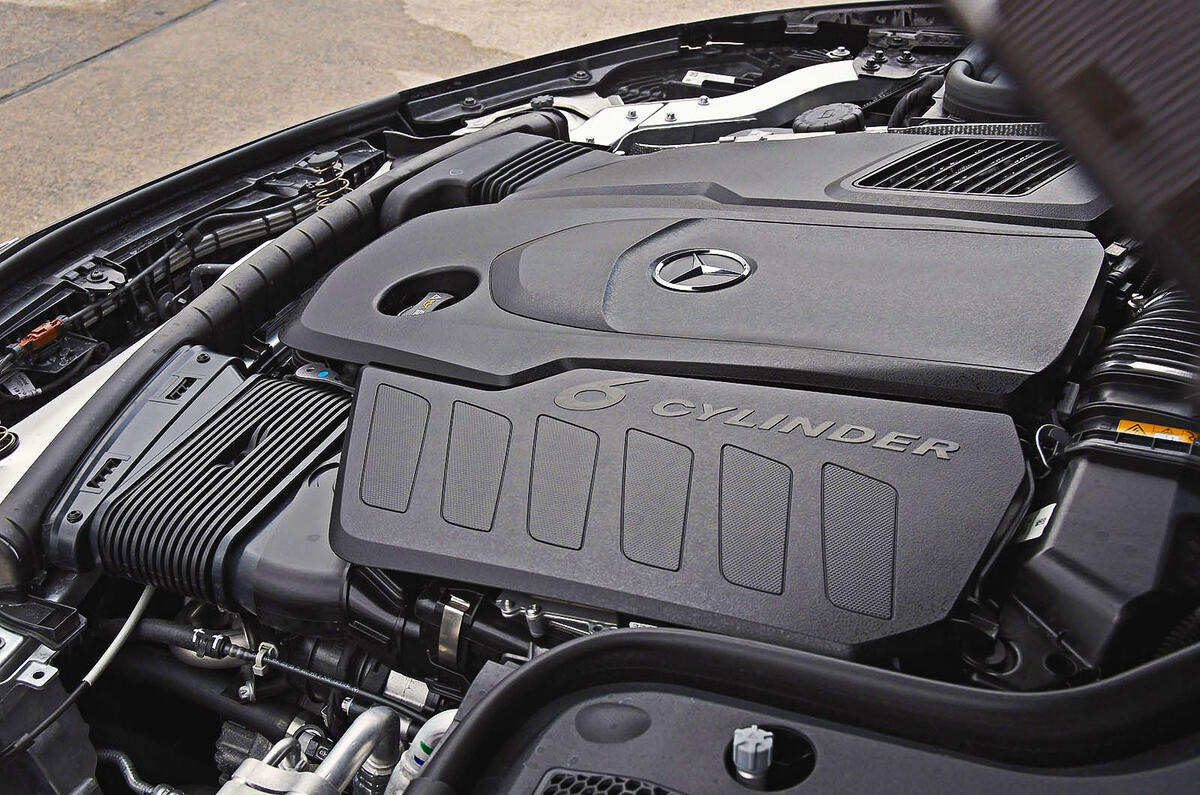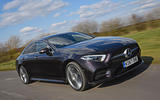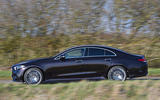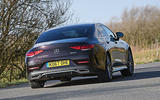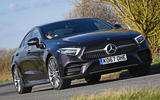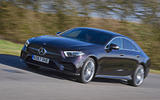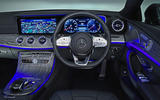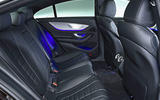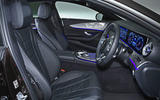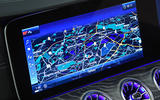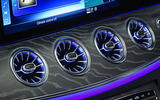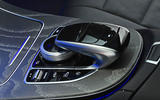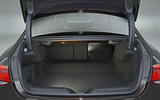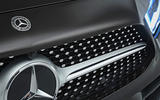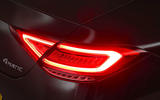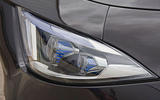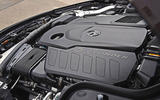You’d like the CLS’ enveloping, sophisticated cabin, I reckon. The car doesn’t have the headroom of a typical executive saloon in either front or back rows, but it’s got decent legroom and can accommodate a 6ft 3in driver without any sense of restrictiveness.
In front of you is a fascia of good fit and finish that looks and feels really lavishly decorated; has adaptive digital instruments and a first-rate (admittedly optional) ‘Comand Online’ infotainment system; and probably appeals just as much after dark as it does in the daylight, thanks to some lovely ambient lighting features. The CLS’ air vents glow red when you turn up the heat and blue when you turn up the AC, for example. But the rifling effect around their rims is their crowning glory for me. Almost nobody’s doing metal garnish as well as Mercedes right now.
We’ve encountered this diesel engine once before, under the bonnet of the facelifted S-Class limousine and running in a less stressed state of tune. It’s little wonder, then, that the mechanical refinement in evidence here is a shade less limo-like.
Mercedes’ straight six is quiet at cruising revs, but if you’re hoping for the smoothness of one of BMW’s inline six-pots, you won’t find it. This is a very willing engine, and it endows the CLS with real-world pace every bit as instant and potent as those power and torque outputs hint at. But it’s disappointingly plain-sounding, even allowing for the fake engine noise being piped into the car via the audio speakers (which gets borderline intrusive in the more aggressive drive modes).
It can also feel too coarse at times to perfectly suit what ought to be an uncompromisingly luxurious car, with combustion vibrations flowing up through the steering column that’s particularly noticeable with the crank spinning relatively slowly, and the odd strange audible moan and groan emanating from the engine bay decectable at idle presumably as the various intelligent ancilliaries switch on and off.
There are occasional vibrations, too, stemming from the corners of the car as you cross sharper motorway ridges and switch onto A- and B-roads. And here, we begin to tug at a thread that reveals how difficult it can be for a manufacturer of luxury sporting executive cars to cater for current customer tastes on things like wheel and tyre choice, but also maintain a consistently standard with the ride and handling of its cars. This isn’t a new problem: I’ve been writing about it for almost as long as I’ve been road testing but, after more than a decade, you might have imagined the industry would have found a way to solve it.
As standard the CLS rides on steel coil suspension, which can be upgraded to Air Body Control adaptive air suspension at extra cost: and our test car had the option. If you buy a CLS in AMG Line trim in another global market, chances are it’ll come on 19in runflat tyres; but, after testing prototype, the firm’s UK distributor elected to drop those tyres and fit a set of noise-cancelling non-runflat 19s as standard, which would be cheaper to replace and deliver better rolling refinement. Good decision. It includes a tyre sealant kit in the car’s boot which, by the way, also includes a spare wheel well under the floor – so you could put your own spacesaver spare in if you wanted to.
Mercedes-Benz UK did nothing, however, about the runflats that come wrapped around the car’s optional 20in alloy wheels, because it couldn’t: the noise-cancelling tyres for the 19in rims aren’t available in the right size. Now guess which wheels and tyres Mercedes had fitted to the test car it delivered for our UK first drive? The big blingy 20s it used for the press handout shots; and, in their defence, not on purpose. And that specific combination of air spring, enlarged wheel and stiffened, shallowed-out tyre sidewall is one I’d be keen to avoid if it were my money.
The CLS rides good road surfaces quite well, and with the relaxing long-wave compliance you expect of an air-sprung Benz when you use ‘comfort’ mode. On those same smooth roads, it likewise has light, fairly well isolated steering of the sort that generally makes long distance touring effortless.
But as the road turns choppier and twistier, you’ll need ‘sport’ mode to keep the CLS’ body from floating and tossing too much, and to more easily place the car. Ramping up the stiffness of those air springs, however, turns a ride that seems a little bit hollow and resonant by luxury car standards even at its best into something decidedly noisy and occasionally quite harsh when it has sharper lumps and bumps to deal with at speed.
The suspension feels under damped most of the time, struggling to maintain good close wheel control and running almost unchecked in rebound to thump the front axle brusquely back down to earth on the far side of sleeping policeman, for example. Gone, too, is the happiness the car’s body had to settle into a level stride in ‘comfort’ mode, instead tending to fidget and oscillate a bit too readily.
Is the CLS any kind of driver’s car, then? Not, we’d have to conclude, in this specification. It handles well up to a point, steering smartly and cornering in decently balanced fashion for an all-wheel drive, near-two-tonne car. But, on more testing roads at least, it’s not really ‘at home’ being hurried; and perhaps it oughtn’t be, given Mercedes markets the air suspension as an added-comfort option. But, thanks to that combination of engine, spring, wheel and tyre, neither is it an outstandingly refined long-distance soother.
